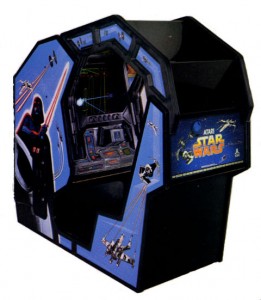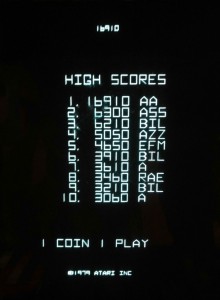Trending
Opinion: How will Project 2025 impact game developers?
The Heritage Foundation's manifesto for the possible next administration could do great harm to many, including large portions of the game development community.

Featured Blog | This community-written post highlights the best of what the game industry has to offer. Read more like it on the Game Developer Blogs or learn how to Submit Your Own Blog Post
When I was young, one of my absolute favourite things in the world were arcades! When ever my parents took me on holiday, I would pray that nearby would be an arcade.

When I was young, one of my absolute favourite things in the world were arcades! When ever my parents took me on holiday, I would pray that nearby would be an arcade. The lights, the sounds, the smell – everything about an arcade filled me with joy and excitement. Row upon row of cabinets fighting for my attention, adorned with intricately designed decals and pumping out sonic blasts of enticing music and sound effects.
Then there were the machines that went a step further, the ones that became a full immersive experience or even a ride! Who can forget the pitching and yawing of the Afterburner cabinet, or the skidding Outrun machine. The game that changed everything for me was the sit down Star Wars cabinet from Atari. First released in 1983, this thing of beauty gave you the chance to be Luke Skywalker piloting his X-Wing battling to destroy the Death Star. I would walk over broken glass in a vat of vinegar to own one of those!

4 gamification lessons from the arcades
Star Wars Sit Down Arcade
Whilst this is a nice trip down memory lane, what exactly does it have to do with gamification?
Glad you asked!

4 gamification lessons from the arcades
Arcades were wondrous, but they were also very crowded and noisy. With so many machines too choose from, it could be hard to make any decision about what to play. Sometimes you would go in and immediately go to your favourite games, but after a while you would want something different. Without the benefit of a map or reviews of the games, game makers had to attract you with nothing but shallow aesthetics. Ignoring the games that could afford to be shaped differently, the first thing you would see would be the graphics on the side of the cabinet. These had to grab your attention enough to look at the screen. Next the screen would need to be showing something exciting. Depending on the game this could be an action filled animation that told the story of the game. Other times it would just be a pre-recorded play through of some of the levels. It would always be the best the game had on offer though, accompanied by the best music that would fit.Once you had put your money in, that was not the end of the story. The game makers didn’t just want you to put one coin in – they wanted all of your coins. The game had to be great – it also had to be easy to get into! Simple instructions on the control board would often be all that was needed. If more detail was required a short tutorial would be provided. The on-boarding had to be short though, too complex and you would never get repeat play.
Once you knew the basics, it was time to play. The difficulty had to grow as your skills did. Get too hard too fast and another flashy machine would attract your players attention. If it was too easy, the player could finish the game without putting much money it!

4 gamification lessons from the arcades
At some point it was likely the player would get good at the game – it may even get too easy for them to play normally. What could the game maker do to keep up the flow of coins? Well, in the days before big multiplayer set ups, this was the job of the High Score table – that’s a leaderboard to you and me. Seeing your three initials at the top of the high score table (or even on it at all) was a moment of true pride! People would (and still do) spend hours and hours and hours just trying to get to the top spot. Over 30 years after they were first released in the arcades, people are still competing to get the highest recorded scores on games like Space Invaders or PacMan! In 30 years time, how many will be using your gamified system?All of this gives us 5 really key things that we can learn from the arcades when we design our gamified systems
You have to attract people to the system. This is shallow, but really important. You may not be able to read a book by its cover – but its cover is the first thing you will see and is what will make you pick it up and dive deeper!
Once they are in, you need to on-board and on-board efficiently. Don’t throw too much at them.
Make using the system easy, but challenge the users and help them keep track of their progress. Too easy and it is boring, too hard and it is frustrating (especially if you can’t see any progress). Scores helped people track their progress and skill levels.
Once the system is mastered, consider what is next. This requires catering for different levels of skill and interest. Not every player was interested in the leaderboard. Most just played because they enjoyed playing. Others played because it became a social event. Some hung around to mentor the new guys – or to challenge and grief them.
If all of this seems a little familiar good! Check out this stuff on user journeys and flow!
Originally posted on my Gamification blog - Gamified UK
Read more about:
Featured BlogsYou May Also Like